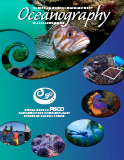Full Text
It’s hard to believe that Oceanography is coming up on its tenth anniversary of publishing “career profiles.” Since 2010, ocean scientists, generally two per issue of the magazine, have been sharing their stories about how they came to their careers outside of academia, what their work entails, and advice on how to seek jobs (see pages 146–148 in this issue for the September 2019 contributions and also https://tos.org/career-profiles for the complete set). While the career profiles page is consistently one of the most viewed on The Oceanography Society website, after publishing 80 profiles by the end of this calendar year, describing a wide variety of career paths, it’s time to assess whether we should continue this column or find some other useful way to use the space in the magazine to address graduate student and early career information needs.
We initiated the career profiles column following a discussion among graduate students at the Ocean Sciences Meeting a decade ago that was brought to my attention. I’d like the space in Oceanography to remain student and early career focused. If you like the career profiles column and want us to continue it, please drop me a note at [email protected] to tell me so and include any suggestions you might have as to how we might improve it. We haven’t changed the basic list of questions we ask the people we profile since the inception of the column. If you think it’s time for Oceanography to try something else in that space, what might that be? Think creatively, talk among yourselves, and please let me know.
– Ellen S. Kappel, Editor

